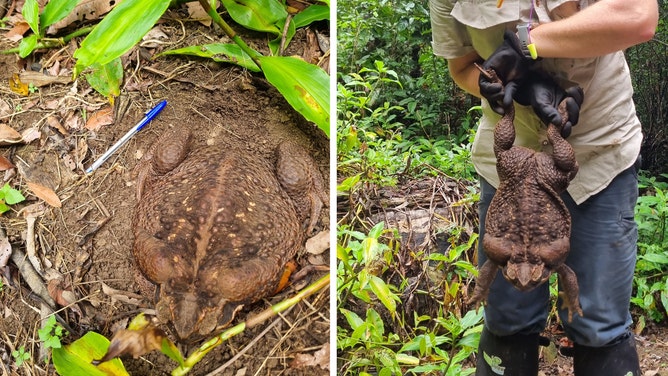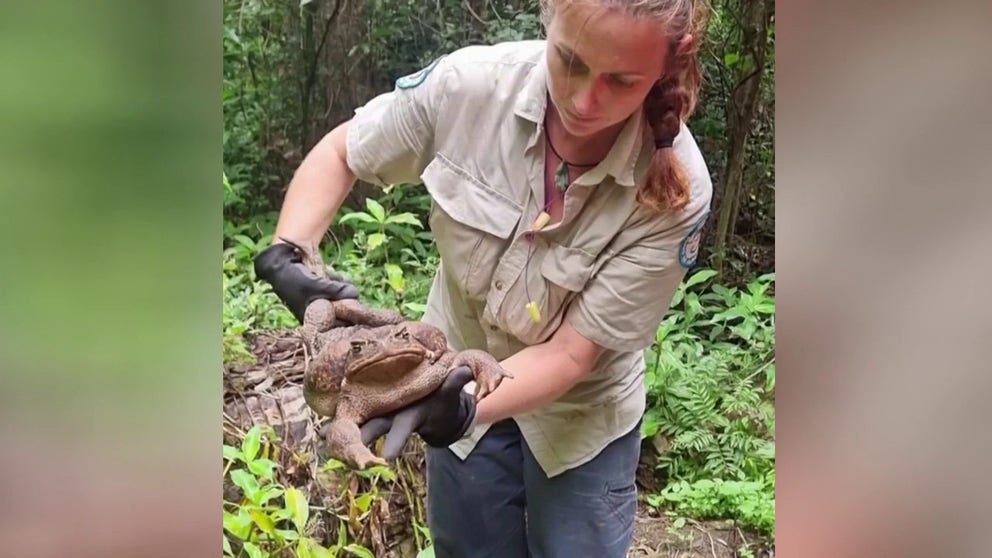'Toadzilla': Researcher gasps after finding perhaps largest cane toad on record
Queensland Environment said rangers conducting track work in Conway National Park, near Airlie Beach, were shocked to find the nearly 6-pound toad beside the Conway Circuit last week.
'Toadzilla': Monster cane toad may be largest ever discovered, officials say
A monster cane toad weighing nearly 6 pounds has been discovered by rangers working in Queensland’s Conway National Park.
AIRLIE BEACH, Australia – A monster cane toad found in Queensland and later dubbed "Toadzilla" could be the largest of its kind on record, according to officials.
Queensland Environment said rangers conducting track work in Conway National Park, near Airlie Beach, were shocked to find the nearly 6-pound toad beside the Conway Circuit last week.
Ranger Kylee Gray said a snake slithering across the track forced them to stop their vehicle. She looked down when she got out of the vehicle and gasped when she saw the enormous cane toad.
"I reached down and grabbed the cane toad and couldn’t believe how big and heavy it was," Gray said.
NATIONAL PARK SERVICE: PLEASE REFRAIN FROM LICKING THIS PSYCHEDELIC TOAD

The cane toad was removed from the wild and humanely euthanised. The cane toad weighed in at nearly 6 pounds.
(Queensland Environment)
Gray said she quickly put it into a container to remove it from the wild.
"A cane toad that size will eat anything it can fit into its mouth, and that includes insects, reptiles and small mammals," she said.
Researchers believe it’s a female due to the size, which grows bigger than males. Female cane toads can produce up to 30,000 eggs in a season, wildlife officials said.
"She was found at an elevation of 393m (1,289 feet), which isn’t unusual, but she has created a lot of interest among our ranger staff due to her size," Gray said.
While the age of the amphibian is unknown, cane toads can live up to 15 years in the wild.
'FROGMAGGEDON' IN FLORIDA TOWN AFTER HURRICANE IAN
"So this one has been around a long time," Gray said. "We’re pleased to have removed her from the national park."
Cane toads were introduced into Queensland in 1935 to control the cane beetle. The toads can be fatally poisonous to wildlife and have caused local extinctions of some of their predators, wildlife officials said.
Officials said "Toadzilla" was humanely euthanized and taken to the Queensland Museum in Brisbane.
